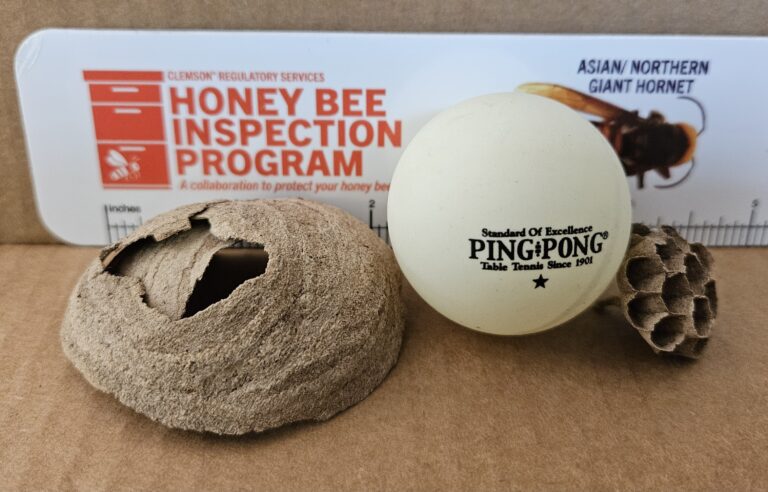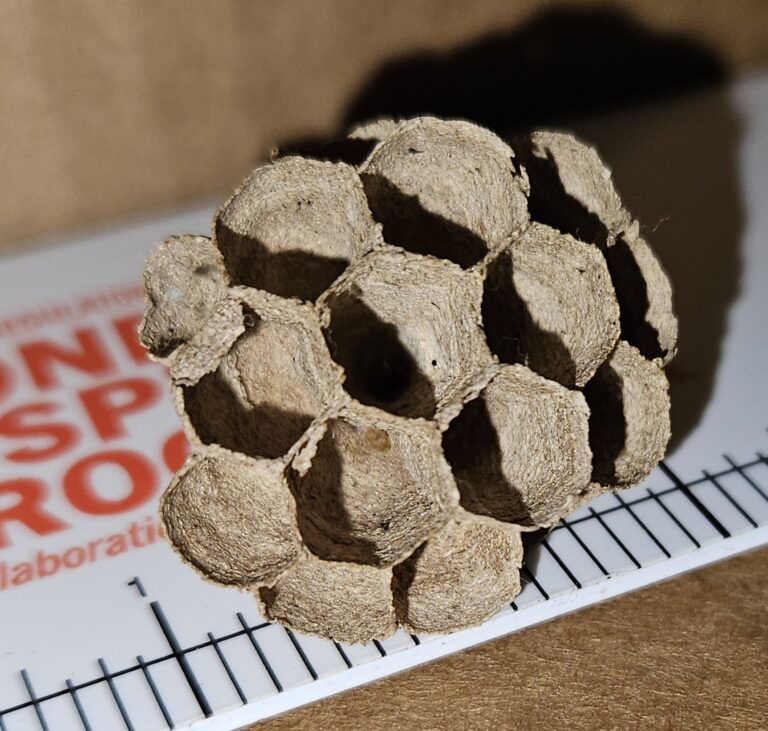Clemson University officials are urging Lowcountry residents to examine homes and other structures after a Beaufort County property owner found a Yellow-legged hornet’s nest affixed to his home April 2.

The Beaufort County finding was the first Yellow-legged Hornet (Vespa velutina) embryo nest detected in the United States.
Inspectors with the Department of Plant Industry (DPI) took possession of the nest April 4, and the insect constructing the nest the was confirmed by the USDA-ARS Bee Research Laboratory April 10.
Embryo nests — also known as Stage 1 nests — are between the size of a ping-pong ball and tennis ball and are usually found in protected places such as the eaves of homes and other structures.
“The discovery of this nest is thanks to the keen eye and curiosity of a homeowner who spotted it, researched it, and reported it. We are now asking other South Carolina citizens, especially those in Beaufort and Jasper counties, to inspect their structures and let us know if they see anything suspicious,” said Brad Cavin, who coordinates the Clemson University program responsible for fighting the invasive hornets.
Anyone who finds a suspected nest should report their findings to www.clemson.edu/public/regulatory/plant-industry/invasive/ylh.html, and include photos. The nest should be left undisturbed so that it can be properly disposed of by field inspectors.
“It’s imperative that people not disturb nests in order to prevent the hornets from flying off and establishing themselves elsewhere,” Cavin said. “Once a report is made, we will follow up and should be able to dispose of the nest within 48 hours of the report.”

The Yellow-legged hornet embryo nests closely resemble bald-faced hornet embryo nests. Specimen capture is the only way to determine if the nest is that of a Yellow-legged Hornet.
The South Carolina nest was found as Georgia officials continue to battle the invasive hornets in the Savannah area.
The first known detection of the hornet in South Carolina was Nov. 9, 2023, and came after DPI’s Apiary Inspection Program — the regulatory agency charged with protecting the state’s beekeeping industry — collaborated with the Clemson Cooperative Extension Apiculture and Pollinator Program to create a proactive trapping protocol designed as an early warning system to help keep tabs on the invasive insect.
A yellow-legged hornet queen was then trapped March 14. The specimen was then tested by Clemson’s Plant and Pest Diagnostic Clinic March 18, and sent to the USDA’s Animal and Plant Health Inspection Service where it was confirmed to be a queen.
While the yellow-legged hornet — not to be confused with the northern giant hornet — is no more harmful to humans than other hornets, it can have a devastating impact on both managed and wild bees.
The yellow-legged hornet is native to Southeast Asia and has established itself in most of Europe and areas of the Middle East. The hornet builds egg-shaped paper nests above ground and often in trees. Mature nests can be large and house an average of 6,000 workers. This exotic hornet may be confused with several native insects, including the cicada killer wasp, the bald-faced hornet, paper wasps, queen yellowjackets, wood wasps and robber flies, but is distinguished from these other stinging insects by its larger size.
The public can visit this Clemson University publication to learn more about the hornet.
Get in touch and we will connect you with the author or another expert.
Or email us at news@clemson.edu

